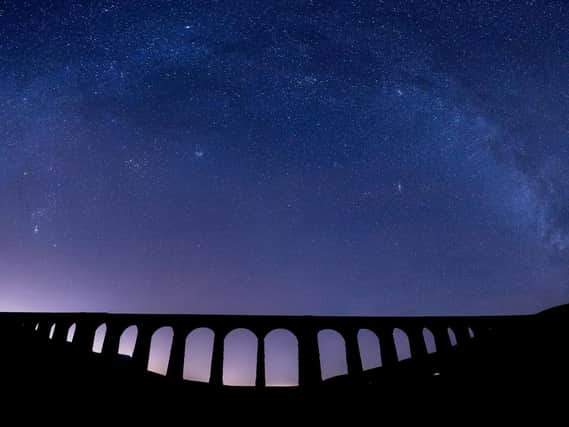More than 50,000 LED lights costing £8m to be installed as street lighting in North Yorkshire to protect dark skies


North Yorkshire County Council’s engineers have conducted the ambitious programme to replace a total of 50,400 street lights with energy-saving LED lamps in an environmentally-friendly push to slash the authority’s carbon dioxide emissions.
The scheme has introduced specific technology with dimmer lighting in North Yorkshire’s two National Parks, which were officially designated as International Dark Sky Reserves in December.
Advertisement
Hide AdAdvertisement
Hide AdPaul Gilmore, the council’s electrical engineering manager who leads the street lighting team, is himself a keen amateur astronomer.
He said: “I have spent the last 30 years as a street lighting engineer putting lights in, and now I am spending my time turning them off or dimming them or making them less bright. But my team buys into that. The more we understand about the impact of artificial light, the more it makes sense.”
The street lighting project was completed in three years instead of an original five-year timescale. It was also due to cost nearly £13m but through procurement, costs have been driven down to just over £8m.
With capital costs reduced by more than £4m and as energy and maintenance savings of £1.285m are projected from 2021/2022, the anticipated payback of the scheme has dropped from over 12 years to under eight years.
Advertisement
Hide AdAdvertisement
Hide AdThe project was fundamental to the Yorkshire Dales and North York Moors National Parks achieving International Dark Sky Reserve status. Engineers replaced lights in the National Parks with warmer tone LED lamps rather than the cooler tone technology that was installed elsewhere.
The North York Moors National Park Authority’s head of polyhalite projects, Mike Hawtin, said: “Part of my job is to preserve and improve tranquillity in the National Park, and dark skies are part of that and it benefits the visitor economy as well as benefiting wildlife.
“We attract people into the National Parks in the depths of winter for the Dark Skies Festival with all the knock-on income from accommodation and hospitality bookings.
“But reduced light pollution and dark skies status is also of benefit to creatures like bats, birds and moths, as it protects their foraging, mating and pollinating behaviour.”
Advertisement
Hide AdAdvertisement
Hide AdOfficial figures have shown that the tourism industry in Flagstaff in Arizona, which was the first location in the world to be given a dark skies designation in 2001, supports more than 8,000 jobs and is worth $500m to the local economy.
The announcement that the North York Moors and the Yorkshire Dales National Parks had been officially designated as International Dark Sky Reserves was the culmination of five years of work.
The International Dark-Sky Association revealed the decision to give protected status to the National Parks in December - one of the largest areas in Europe to be simultaneously designated.
Other sites that have protected status include the Grand Canyon and Death Valley National Parks in America, Mont-Mégantic National Park in Canada and NamibRand Nature Reserve in Namibia.